
Albanian Pastiçe: Easy baked pasta recipe
Discover Albanian pastiçe: bucatini with feta and eggs baked into a golden pie—simple, nourishing and perfect for hectic days.
Salsa verde means nothing more than ‘green sauce’ in both Italian and Spanish. It is a fairly general description, which also means that there is quite some variation in its recipe.
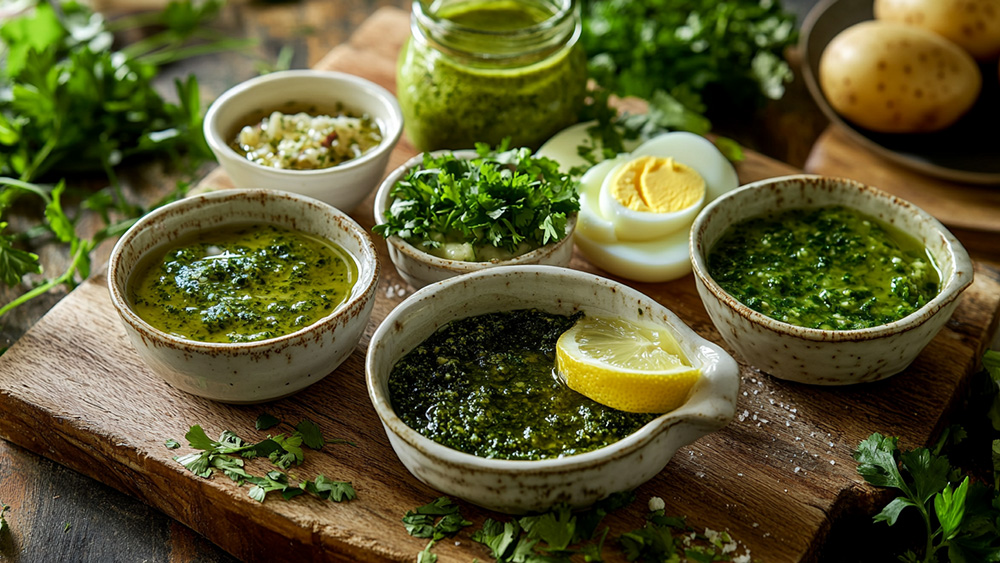
Salsa verdes have their origins in the Middle East and must have been created more than 2,500 years ago. Roman soldiers and officials brought the recipe home, beginning the world journey of this famous sauce.
From the fifth century comes ‘De re culinaria’ (‘On the Subject of Cooking’), a collection of recipes from ancient Rome. One of those recipes is ius viride in avibus (‘green sauce for poultry’). This sauce consisted of pepper, caraway, spikenard, cumin, bay leaves, a variety of green herbs, dates, honey, vinegar, wine, broth, and extra virgin olive oil.
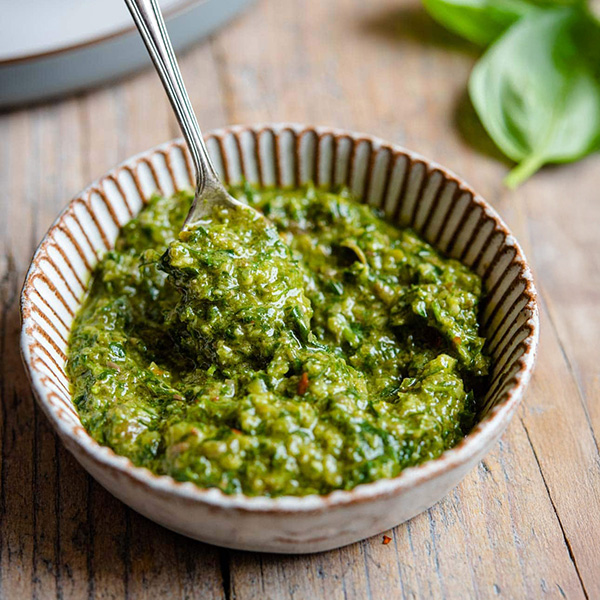
In Italy, ius viride evolved into salsa verde, which today is prepared with parsley, vinegar, capers, garlic, onion, anchovies, and extra virgin olive oil. All ingredients are finely chopped and combined.
From Italy, the recipe for this sauce was carried to countries such as France (sauce verte) and Germany (grüne Soße).
There are indications that Grüne Soße arrived in Frankfurt am Main around the year 1700, brought by the Italian trading families Bolongaro and Crevenna. In Frankfurt, the sauce is called Frankfurter grie soss. A possible origin of the German variant lies with the Huguenots who emigrated to Kurhessen in the 18th century. Unsurprisingly, the German version uses a different combination of herbs, as those from the Mediterranean region were difficult to obtain in Germany at that time.
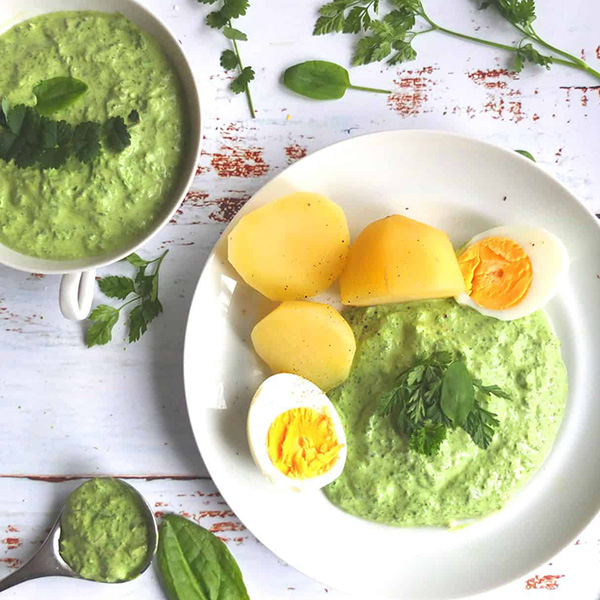
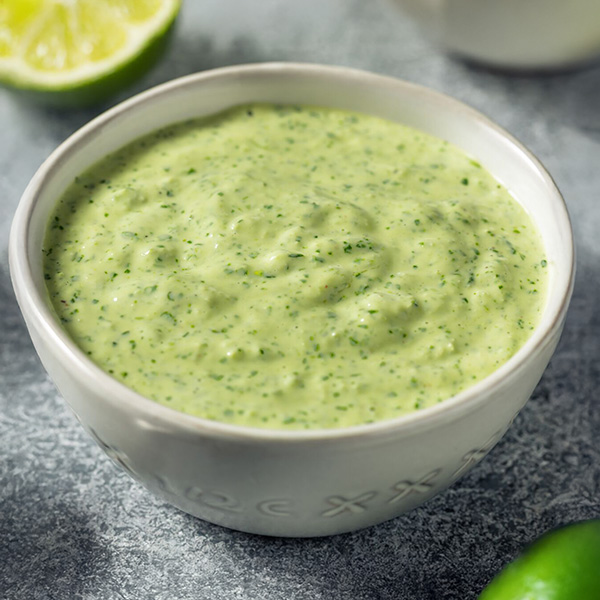
In France, salsa verde transformed into sauce verte and was incorporated into French cuisine. The original French recipe uses breadcrumbs and extra virgin olive oil, but most modern recipes have evolved into a green mayonnaise, flavored with tarragon, parsley, and sometimes sage. Vinegar has been replaced with lemon juice.
The English greensauce is the predecessor of the now traditional English mint sauce (love it or hate it). Greensauce for the ‘common man’ was made with herbs, especially sorrel, mixed with vinegar and honey. The version for the aristocracy was first documented in the 12th century by Alexander Neckham (1157-1217). His recipe for greensauce included sage, parsley, dill, thyme, garlic, salt, pepper, and a long-forgotten spice called costus.
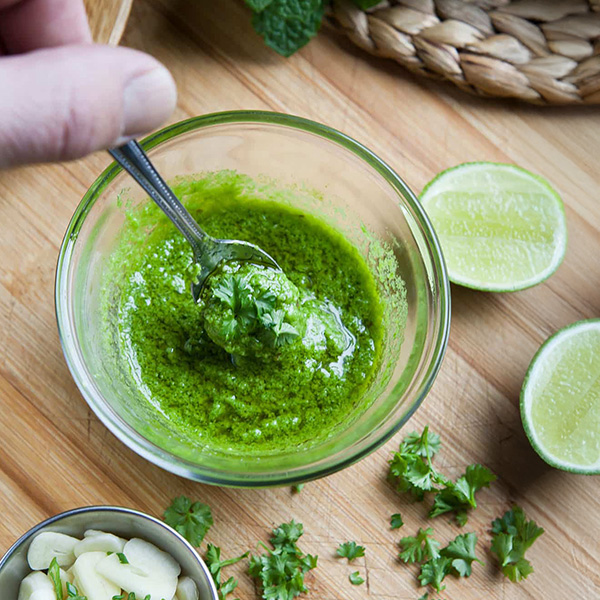
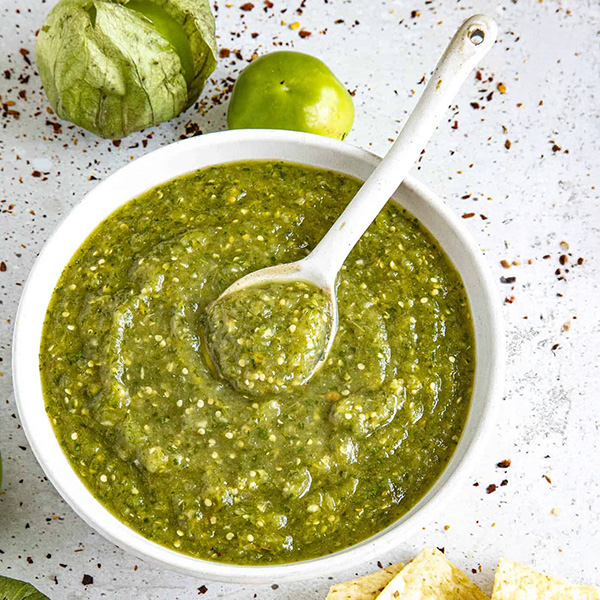
In Mexico, salsa verde has strayed further from the original recipe. Its base consists of green tomatillos, a relative of tomatoes. Some recipes on Dutch websites mistakenly suggest using green tomatoes for salsa verde, but doing so would be a big mistake: green tomatoes are still toxic.
Since tomatillos can be quite expensive, we think it’s a much better idea to use the traditional French recipe for sauce verte. After all, stale bread is almost always available. This recipe is also a fantastic way to reduce food waste while putting something delicious on the table.
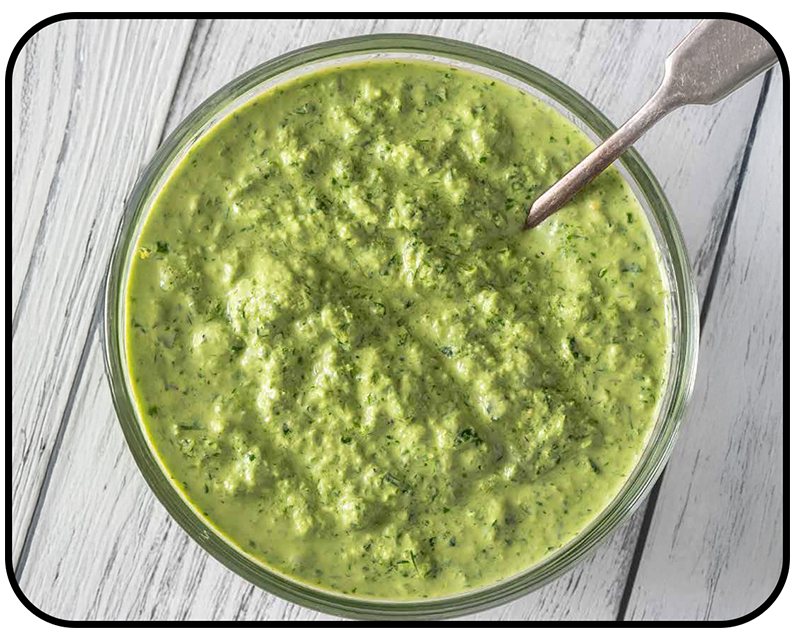
This classic recipe for sauce verte combines the freshness of green herbs with the creamy texture of stale bread and extra virgin olive oil. Perfect as a side dish for meat, fish, or vegetables.
Cuisine: French
Course: Sauce / Condiment
Keywords: sauce verte, French green sauce, fresh herb sauce, classic sauce verte recipe, homemade green sauce, extra virgin olive oil sauce, leftover bread recipe, no-cook sauce

Discover Albanian pastiçe: bucatini with feta and eggs baked into a golden pie—simple, nourishing and perfect for hectic days.

The flag of Albania is more than just red and black. This article explores the deeper meaning behind its national symbols – from the double-headed eagle to the traditional ‘Shqiponja’ hand gesture, the unique Albanian language, and the country’s rich cultural heritage. A story of pride, identity, and history captured in one powerful symbol.

This homemade chili oil with Extra Virgin olive oil is a flavor bomb that’s also great for your health. Easy to make and incredibly versatile.

Albania is home to thousands of medicinal plants. Discover how traditional herbal wisdom not only impacts lives, but also shapes a unique export industry.

Despite an increase in risk factors such as an unhealthy diet and less physical activity, cardiovascular mortality in Spain remains surprisingly low. What explains this mysterious ‘Spanish Paradox’? Discover how a key element of the Mediterranean diet plays a crucial role.

The Albanian olive harvest is severely impacted by a labor shortage, leading to a significant decline in olive oil production and exports. In the first nine months of 2024, exports dropped by 60% compared to the same period in 2023. This not only poses challenges for the domestic market but also hinders Albania’s position as an emerging olive oil producer.
Subscribe to be inspired with our latest products, deals, taste combinations and much more!